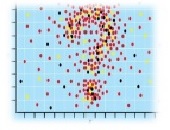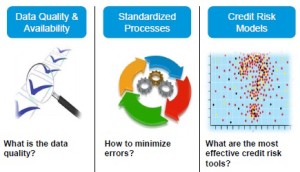There are multiple challenges to private firm commercial & industrial (C&I) risk management, according to Mehna Raissi, Director, Enterprise Risk Solutions at Moody’s Analytics. She was the second of two speakers at a GARP-sponsored webinar on September 9, 2014, to address the Dodd-Frank Act Stress Test (DFAST).
Successful risk management depends on three things: the potential for error within standardized processes; ongoing monitoring of counterparty credit risk; and the efficacy of credit risk models. A very big challenge is data quality and availability. “What are the types of variables and factors needed?” Raissi asked. “How can we take into consideration granularity and aggregation?” Much depends on the detail necessary for reporting.
There may be other risk drivers than what a given model contains, and she urged model developers to “build a systematic framework for quantitative and qualitative factors.”
Similar to her description of the C&I challenges, Raissi described the challenges to commercial real estate (CRE) risk management. The ability to get updated property information is paramount. She noted that a forecast that differentiates between property types and submarkets is often not available.
“Default history and modeling expertise is needed over multiple cycles,” she said. Different geographic areas react differently to an economic recession, and these must be taken into account when assessing the impact of the macro-economy.
Raissi spoke about best practices and credit risk tools for an end-to-end process. Ideally, data collection, financial analysis, and credit scoring would be done on a single platform that could incorporate internal risk ratings. The solution would facilitate monitoring and reporting through use of a dashboard.
Ongoing monitoring would allow a bank to identify issues before they arise for specific segments within the portfolio. The reporting would show relative contributions from various risk drivers, and it would incorporate qualitative factors in the credit assessment. The reports could easily compare a borrower against a peer group.
Raissi said that, depending on whether a bottom-up or top-down model is used, the required input would differ. Probability of default (PD) is best modeled through a bottom-up approach that considers microeconomic inputs such as income statement and balance sheet financials. Top-down models, relying on macroeconomic variables, are used to predict loss given default (LGD), expected loss ( EL), charge-offs and stressed PDs.
The best solutions, Raissi concluded, fulfill requirements of the DFAST, and offer many more functions, such as providing a basis for pricing, capital allocation, and an early warning system.ª
Click here to view the webinar presentation. Mehna Raissi’s portion covers slides 10-13 and 37-50.
Click here to read about the first presentation in the DFAST webinar.


